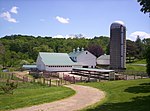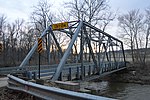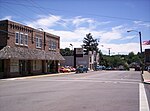Malabar Farm State Park
1939 establishments in OhioBiographical museums in OhioFarm museums in OhioFarms on the National Register of Historic Places in OhioHistoric districts in Ohio ... and 9 more
Historic house museums in OhioHouses in Richland County, OhioLiterary museums in the United StatesMuseums in Richland County, OhioNational Register of Historic Places in Richland County, OhioProtected areas established in 1939Protected areas of Richland County, OhioState parks of OhioUse mdy dates from October 2020

Malabar Farm State Park is a state park in Richland County, Ohio, United States, located near Lucas and the Mohican State Park.
Excerpt from the Wikipedia article Malabar Farm State Park (License: CC BY-SA 3.0, Authors, Images).Malabar Farm State Park
SR 603, Monroe Township
Geographical coordinates (GPS) Address Website External links Nearby Places Show on map
Geographical coordinates (GPS)
| Latitude | Longitude |
|---|---|
| N 40.649166666667 ° | E -82.390555555556 ° |
Address
Malabar Farm State Park
SR 603
44843 Monroe Township
Ohio, United States
Open on Google Maps







